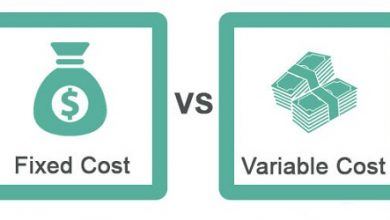What is task management?
Task management is nothing more than a strategic way to establish fair deadlines for carrying out activities, schedule and control appointments — in addition to delegating responsibilities that are in accordance with the behavioral profile of each employee.
Thus, each employee will be aware of their role within the team, about which tasks they should prioritize and which ones they can leave for later. Also, no employee will be overwhelmed, which is good for good mental health and high performance, as well as other benefits that we’ll detail below.
What are the benefits of task management?
With the advancement of technology as a result of globalization, competition between companies has grown and the consumer has become more demanding, as with just one click, he decides which product or service will serve him faster and better.
Soon, that management based on guesswork was left behind, and it was necessary to organize tasks in a strategic way so that the business could move forward and remain competitive in the face of so much competition.
With that in mind, we’ve listed the main benefits of task management so that you don’t think twice about implementing this tool in your company right now!
1-Centralized information
Thanks to advances in technology, currently, companies no longer need to use Excel spreadsheets or word documents to organize and distribute activities. Today, with the help of task management software, it is possible to gather all information in one place, with multiple views, making everything more organized and dynamic
Through “cards”, the task board provides an overview of what is being produced and which activities are in progress and which have already been completed. Still, in times of growth in home office work, having an online tool helps the manager to follow the team’s performance assertively, even from a distance.
2-Facilitates internal communication
One of the main challenges within a company is to have efficient internal communication . And when team members are unable to interact so that everyone knows what to do and when to do it, deadlines are not met, directly impacting employee productivity and losses for the business.
Therefore, having a task management software allows internal communication to progress clearly and without noise between the employees involved in the same project, so that everything goes as expected and within the deadline stipulated by the manager.
3-Improves time management
Peter Drucker, known as the father of modern management, quoted, in one of his works, a phrase that clearly portrays the importance of time management: “Time is the scarcest resource and, unless it is managed, nothing else can be managed”.
Therefore, in the current job market, the multitasking professional has gone out of fashion, since the key to having a high-performance person is putting the right person in the right position and performing activities that match their soft and hard skills .
But that alone is not enough, there needs to be good time management, something that is possible through a task management tool. With an organized schedule, employees will be able to understand their priorities, knowing how to differentiate between what is urgent and important and what is also important, but not a priority.
Reinforcing this understanding, Drucker adds: “There is nothing so useless as doing with great efficiency something that should not be done.” Thus, we can conclude that task management contributes to increased productivity and engagement, making the employee a high-performance professional.
How to manage tasks?
Now that you know the main benefits of good task management, it’s time to put it into practice. In order to make this implementation as dynamic as possible, we have separated the main steps. Check out!
1-Build a flowchart
This is the first step towards good task management. That’s because a flowchart will allow a clearer and more illustrative view of hierarchies, positions and the role of each one.
Thus, you will be able to designate the tasks that match the competences of each member of the team and enter deadlines according to the urgency of each one of them. Here, a good tip for not making mistakes is to rely on the help of a software with behavioral profile mapping, to get to know your employees and their skills in a deeper way.
2-Dialogue with the team
In modern times, there is no longer any room for centralizing leadership. Therefore, in addition to knowing the profile of employees to better designate the tasks of each one, it is important to open the doors of dialogue in the company.
In this sense, after organizing the tasks of each team member and setting deadlines, communicate the team, through meetings, for example, about how the task management will be carried out.
In addition, also invest in one-on-ne meetings , to understand what each employee understands about their role and if they feel motivated and engaged in carrying out the tasks assigned to them. Only by receiving such feedbacks , the manager will understand if everyone will be aligned towards the main objective, which is the company’s.
3-Adopt a methodology
With the adoption of an agile task management methodology, it is possible to better organize the demands and understand which are the high, medium and low performance professionals on the team. Among those available on the market, two stand out and have been the most used today: Scrum and Kanban .
Scrum is an agile methodology that focuses on making project planning and execution more adaptable and efficient. His technique consists of nothing more than dividing the project into smaller fragments, called Sprint, which have daily monitoring of the evolution through alignment meetings with the team.
Kanban, on the other hand, is a method of organizing tasks that helps managers and employees to visualize and control, in a more assertive way, the demands of the team. Thus, through the elaboration of a chart, tasks are organized in columns, according to the status of progress: to be done, doing, done and waiting.
Finally, both Scrum and Kanban enable the processes of HR and other sectors to be managed in a more organized and useful way.
4-Choose a task management software
As we have already mentioned, the advancement of technology in the business area has given rise to several software that help in managing tasks. Therefore, to choose the right one for your company, you must first understand your needs, according to the number of employees, for example.
Furthermore, it is important to choose a tool that is aligned with the level of technology your company already has . So, try to opt for an easy-to-use software, with the intention that less time is spent on training and that all employees can use it with ease. In this way, everyone will adapt to task management.




